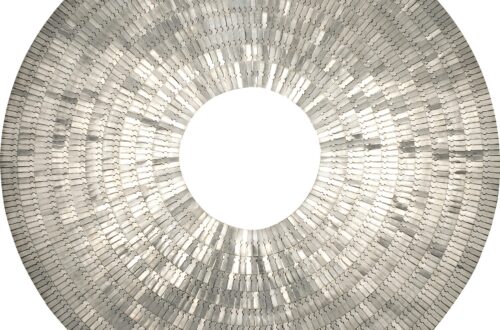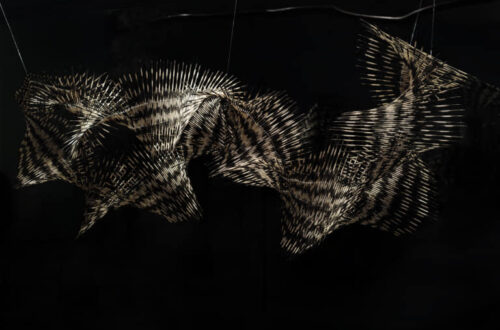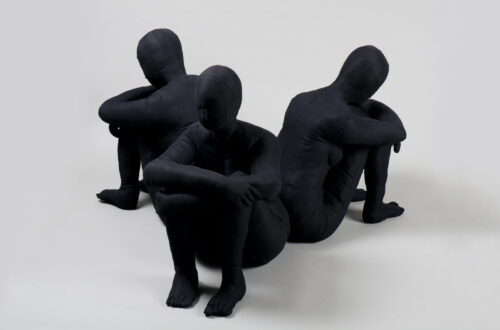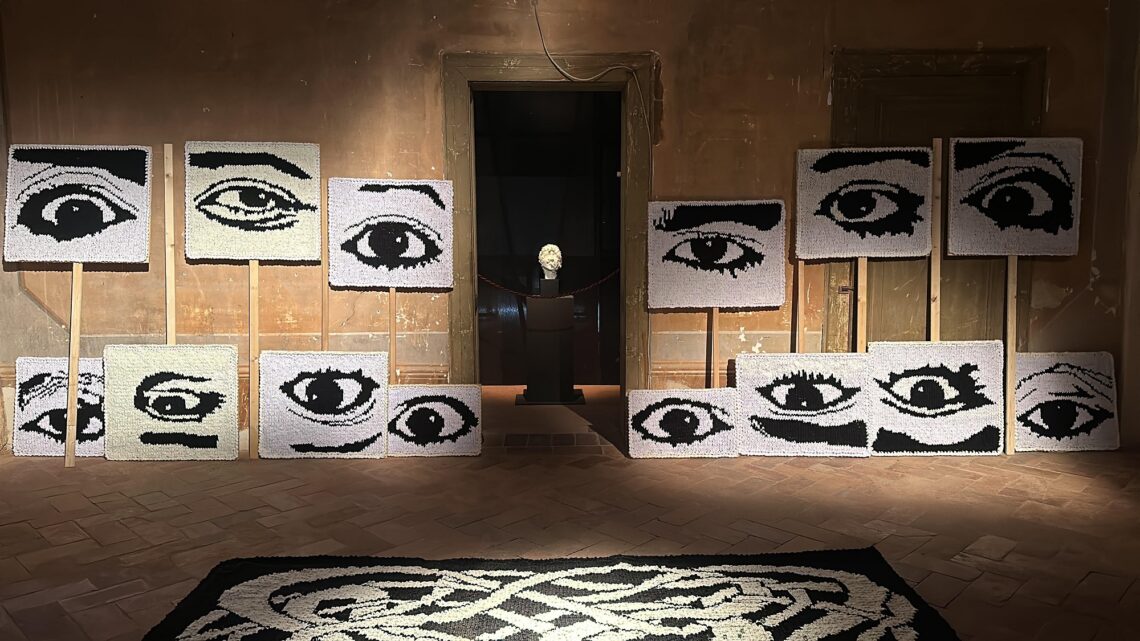
THE LIVING AND ACTIVE ART OF PATRIZIA BENEDETTA FRATUS
| by Barbara Pavan |
With Indre and the Medee project—her two most recent interventions—Patrizia Benedetta Fratus (Palosco, 1960) reaffirms her commitment to participatory art, exploring and seeking new individual, social, and political relational dynamics as alternatives to those experimented with so far.

An artivist active for years on both the national and international scene, Fratus has always been convinced that art represents a tool for transformation and evolution, both on an individual and collective level, with significant social and political implications. She favors the use of discarded materials to create works and interventions that actively engage those who contribute to their realization, making them an integral and living part of the process. Through the exploration of linguistic maps, she investigates the roots of an imagined reality beyond stereotypes, fully aware of the power inherent in words—their ability to generate infinite worlds. Her artistic practice takes shape as both an intellectual and empirical inquiry aimed at fostering awareness, self-sufficiency, and self-determination, essential elements for human emancipation.
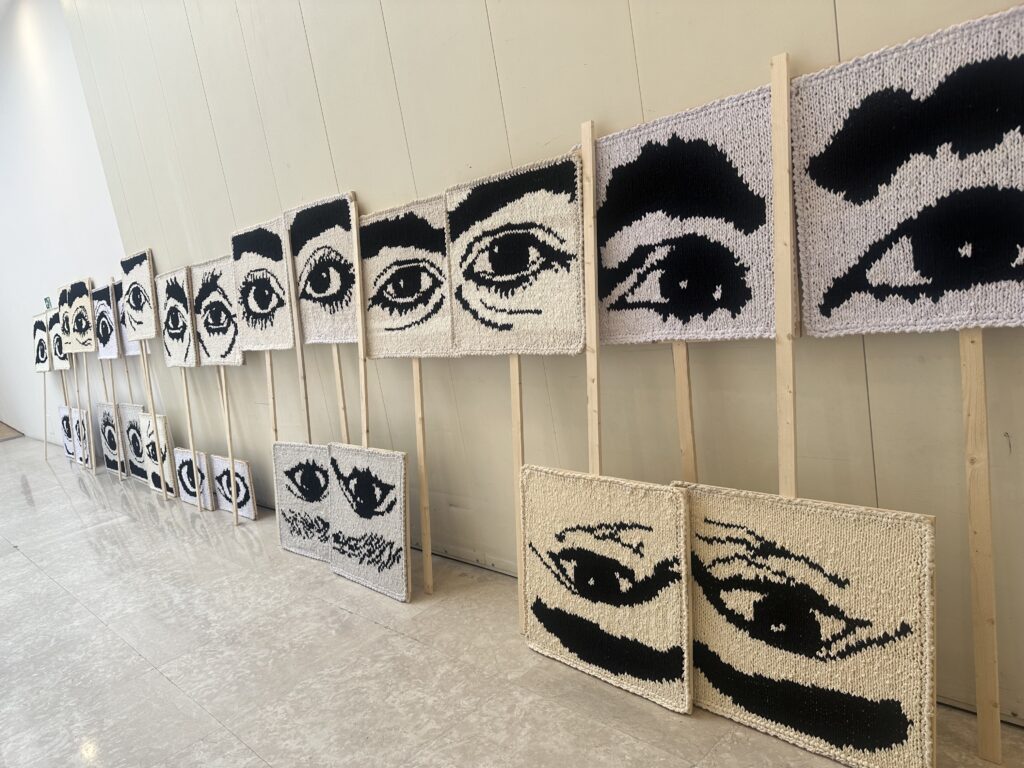
In 2023, the Diocesan Museum of Brescia hosted CONTRONESSUNO/A, an anthological exhibition promoted by Butterfly CAV and Case Rifugio, showcasing ten years of participatory and relational art created by the artist with the Centre, in collaboration with associations, schools, and institutions. The exhibition did not represent a conclusion but rather a starting point for new developments in relational art as a tool for emancipation and individual fulfillment.
Through choral and collective works, CONTRONESSUNO/A documented the transformative value of these projects, which fostered an awareness essential to freedom. The large embroidered canvases, the result of collective work carried out within the individual projects, were displayed along the perimeter walls of the former refectory, evoking the cave walls where humanity has left traces of its time. They restored the narrative of a decade of art projects in which every participant is both author and protagonist of their own story.
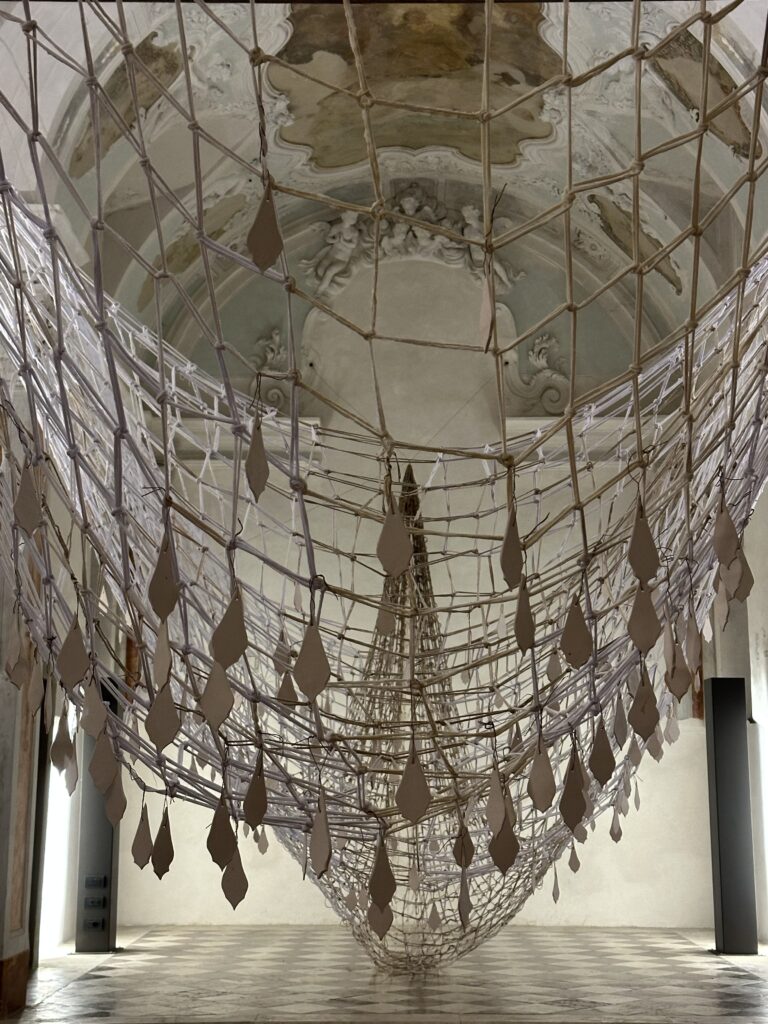
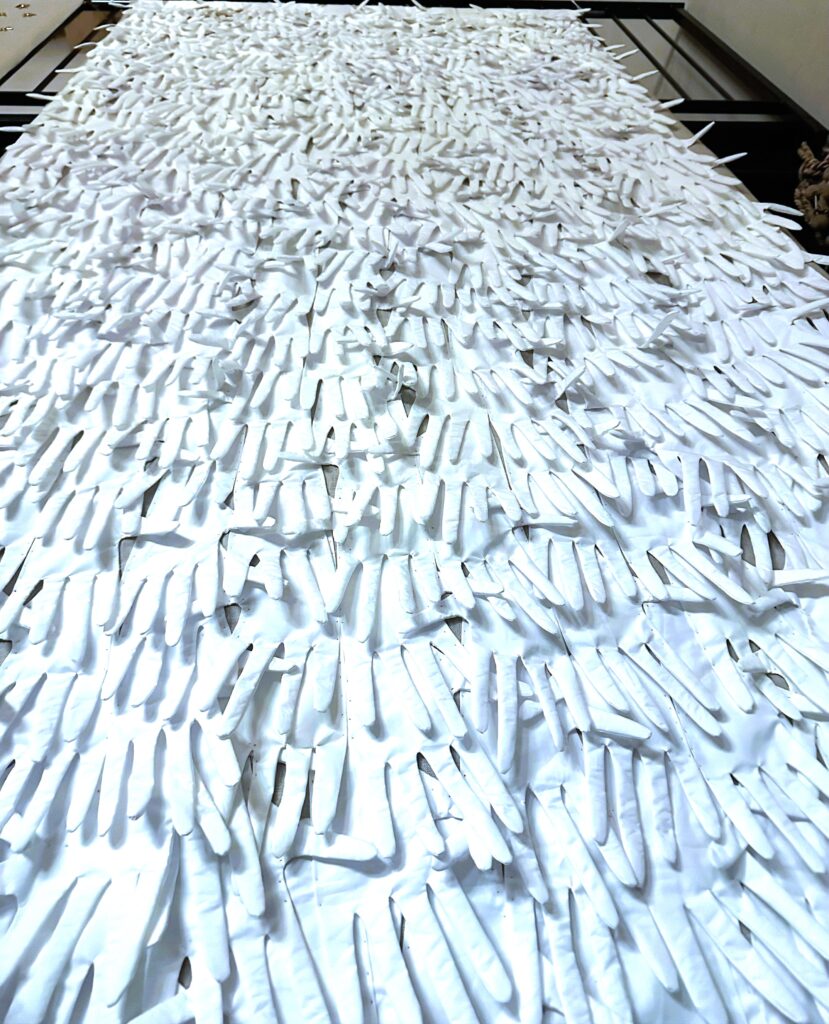
Among them VIRGINIA PER TUTTE, created during the pandemic, when enforced coexistence with their abusers further worsened the condition of many victims of violence. The artist, who had already been working for years with the women of the refuge, initiated a new project inspired by A Room of One’s Own by Virginia Woolf, addressing the themes of gender disparity and the representation of women in history and culture.
The work revolves around the translation of the essay into every possible language and form of expression, highlighting how the lack of access to texts is itself a form of cultural exclusion. The realization that the book exists in only a fraction of the world’s languages became the starting point for concrete action: through the spontaneous collaboration of teachers, students, and volunteers, each participant translated a passage of the text and either embroidered or wrote it in red on white fabric, thus creating a collective and participatory artwork.
The initiative expanded nationally, involving curators, institutions, and artistic organizations such as Connecting Cultures in Milan, and was enriched by theatrical performances and installations, giving life to a living and ever-evolving work. The project materialized in the translation of the text—one verse at a time—into numerous languages, many of which had never had access to it before, demonstrating that change is possible: history is not immutable but can be rewritten.
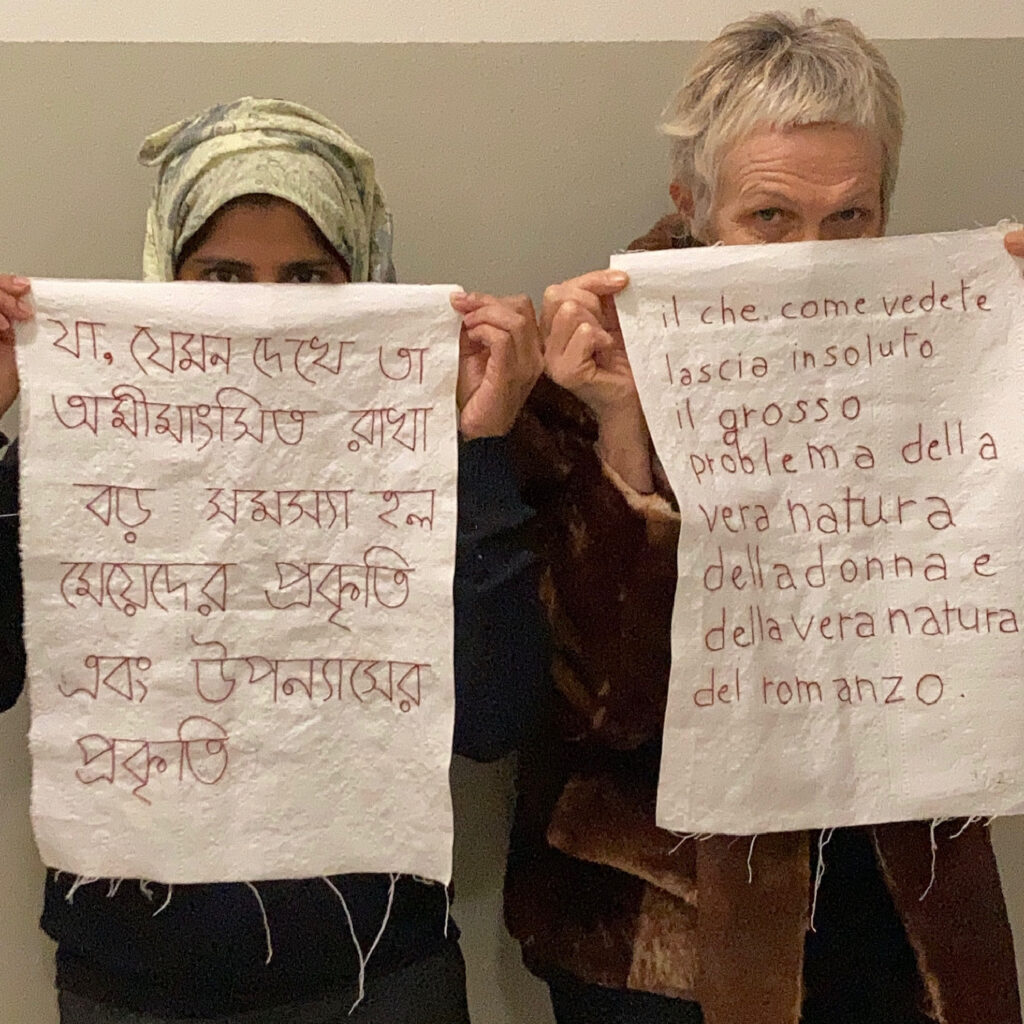
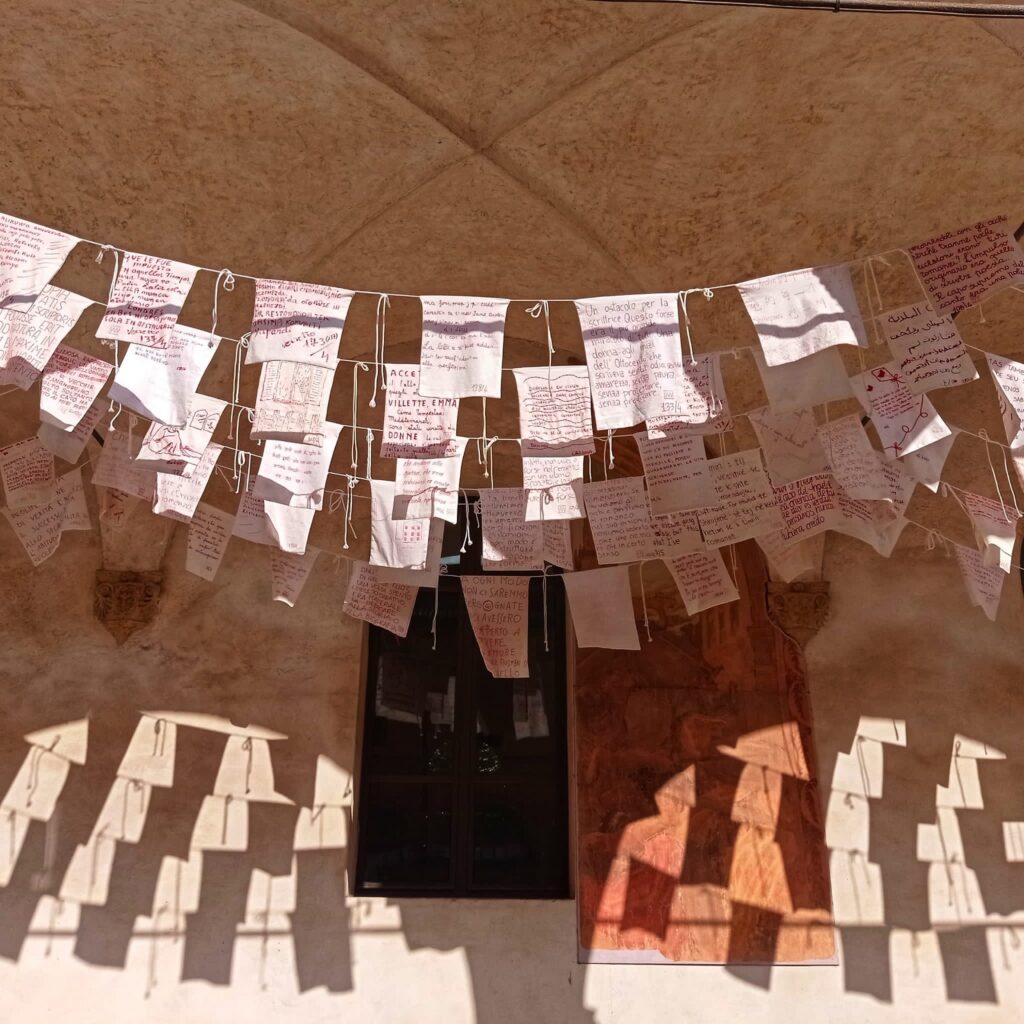
The goal is not merely to translate a book but to provide tools to deconstruct oppressive narratives and imagine a different, more inclusive, and conscious history. Today, VIRGINIA PER TUTTE continues to travel with new exhibitions, and last November, the Farsi version, illustrated by Sara Dar, was delivered to the Brescia Library Network at the Queriniana Library.
Thus, 2025 opened with INDRE, created at the MAC Museum of Contemporary Art in Luzzana and inspired by the sense of isolation that defines contemporary societies—an isolation amplified by the neoliberal narrative, which imposes an individual model where success, wealth, and beauty are prerequisites for visibility and even existence itself.
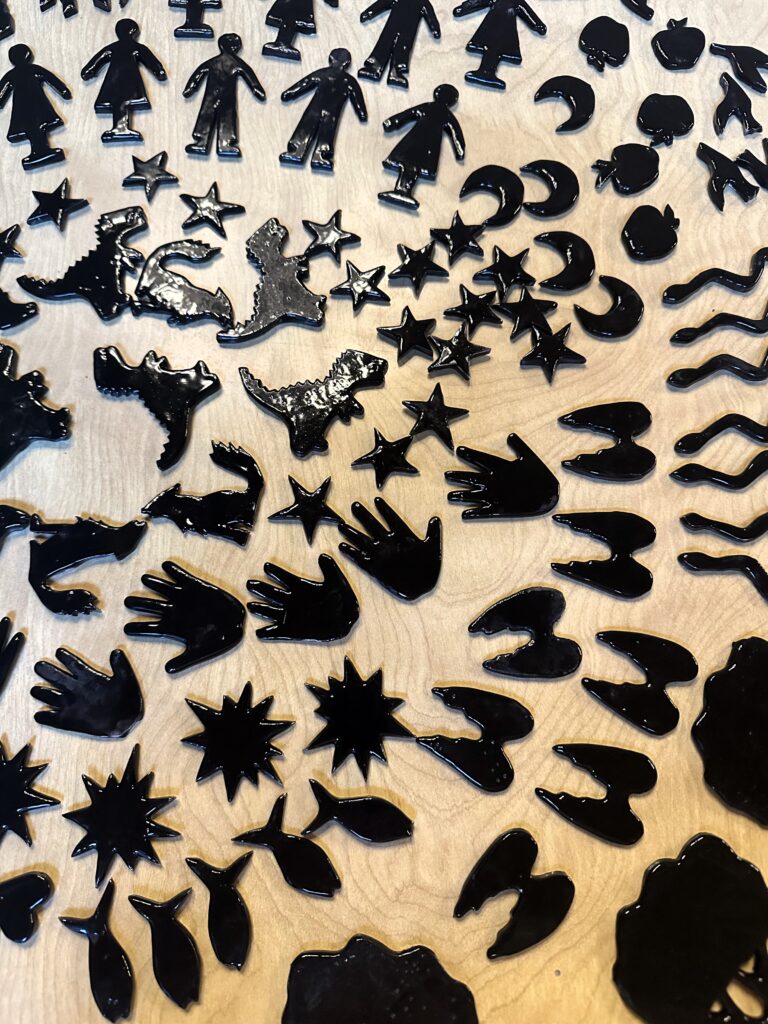
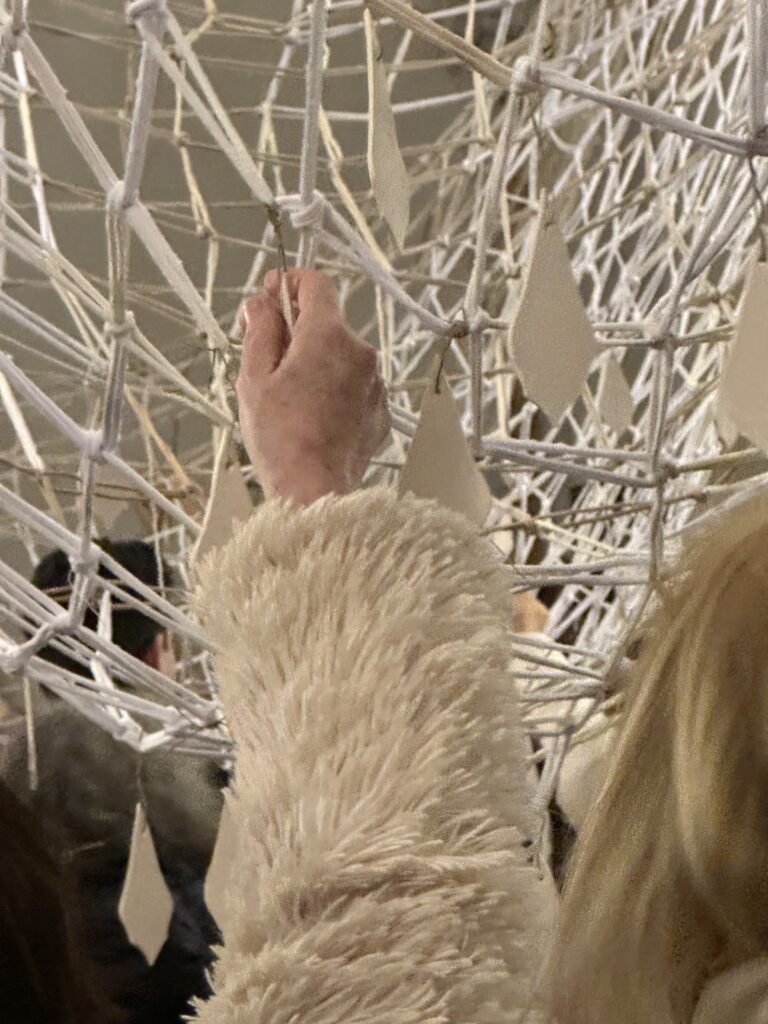
In this competitive and fragmented context, invisible boundaries between people multiply, fueling frustration, fear, and destructive behaviors. Individuals, increasingly focused on themselves, forget about others, contributing to a polarized and discriminatory society. Yet, every human being is part of a complex and interconnected system, as evidenced by science and philosophy—such as the Buddhist concept of dependent origination (engi). A powerful symbol of this interconnectedness is Indra’s net from Eastern mythology: an infinite structure where each node, adorned with a jewel, reflects the light of all the others, demonstrating that every element influences the whole.
Fratus’ participatory artwork invites people to recognize themselves as part of a greater whole in which every individual is unique and essential. The project rewrites the myth through a female perspective, engaging participants in a collective action that reaffirms the interconnection between people and life itself.
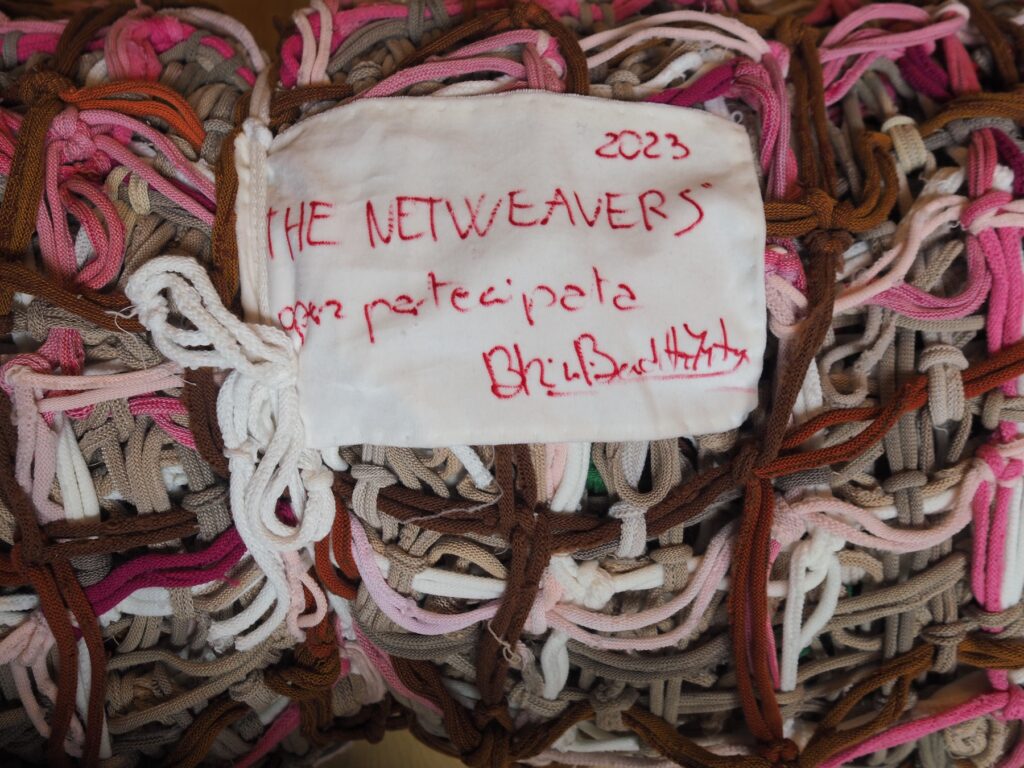
Created for March 8th, the day dedicated to women’s rights, INDRE draws from historical memory while also opening a dialogue on ongoing struggles. The work takes the form of a monumental and ever-expanding net, built through a collective intervention where white clay elements, suspended at the nodes, interact with one another. Just like in Indra’s net, every movement affects the others, reinforcing the idea that reality is transformed through sharing and collective action—through participation in a vibrant web of connections.
Through the form of the net Fratus, has often explored different meanings and contents, all relating to the inescapable connection that links living beings to one another and to the Earth. Thus, a net characterized the participatory intervention REMAKE, a collective work of social art aimed at mending rifts through art, created at the University of Milan Bicocca. On the other hand, the advent and exponential development of the internet since the 1990s has brought the concept of a network and its associated language into our daily lives, where ‘connection’ and ‘sharing’ have become common and frequent terms. Therefore, we all belong to some form of network that not only permeates our existence but to which we are also called to be both builders and maintainers. This pervasive plurality of networks also inspired THE WEBWEAVERS, a participatory artwork created for the 140th anniversary of Edison Energia.
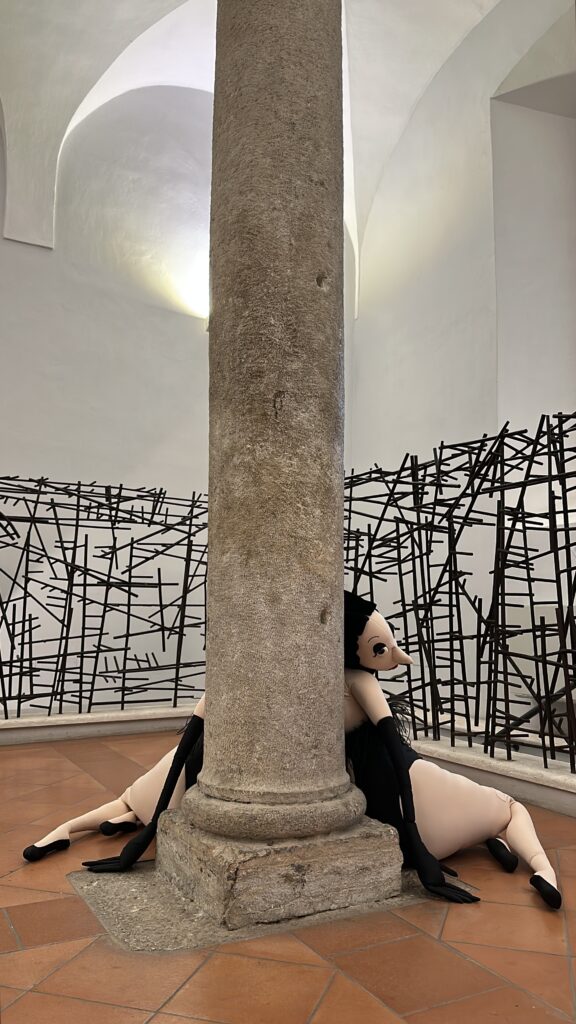
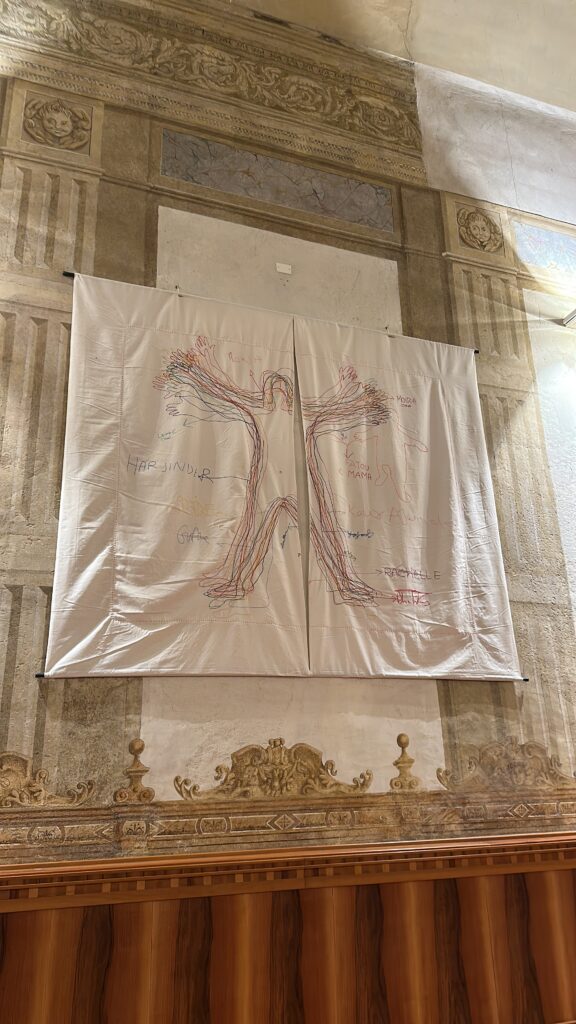
In 2025, the project MEDEE was also launched, hosted at HU BS Martinengo in Brescia. It began as a space for reflection and creation promoted by Butterfly CAV and the Refuge Houses, with the sponsorship of the Province of Brescia. Through participatory interventions involving students from Brescia’s schools, the project will culminate in a public presentation at Palazzo Martinengo in Brescia.
Conceived by the artist, the project was born from the desire to rethink and decode the imaginaries that influence our lives, with the aim of constructing new perspectives of hope. The figure of Medea becomes the central symbol of the project, no longer simplified in her cruelty, but reinterpreted as a generative archetype that embodies the duality of life itself, where every creation carries the possibility of transformation and change. This symbolic reversal translates into a journey aimed at making participants creators of new scenarios for interaction, both individual and collective, overcoming cultural and religious monisms and placing freedom of expression and the ability to imagine at the center.
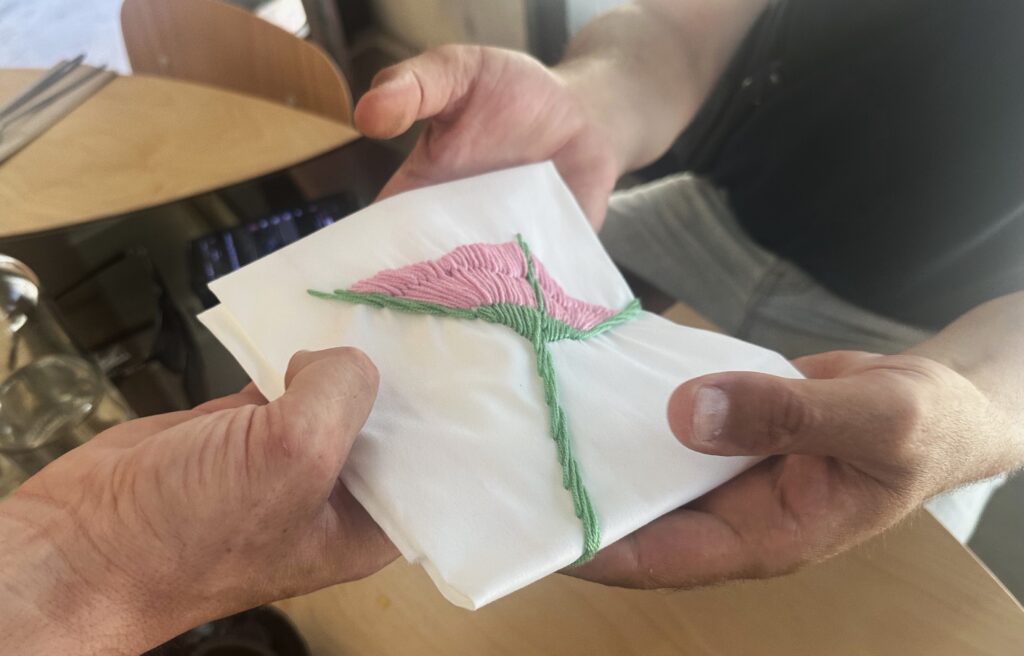
In this space, Fratus developed the participatory art work “RIPENSA”, which stems from a reflection on the human capacity to regenerate through love, even in the most difficult situations. The project is inspired by the words of Rosa Luxemburg, who, from her prison, wrote to her friend Sonia Liebknecht, describing the night as a soft darkness, if one looks at it the right way. This invitation to change perspective, to find beauty and hope despite everything, becomes the conceptual core of the work. As Fratus writes, “Despite all the adversities that life presents, we always have the possibility to love.” The installation unfolds through three symbolic cloaks – a cloak of sky, a cloak of earth, and a cloak of humanity – representing the inseparable bond between the individual and the world, between the beauty of existence and the collective responsibility to build a more conscious society. Each cloak is a visual and conceptual manifesto that invites reflection, urging individuals to reconsider their role in the social fabric and to recognize the need for love as a tool for transformation. The work becomes a starting point for an open dialogue on the concept of rights, intertwining art, daily life, and contemporary issues—an inclusive space for shared reflection that embraces the artistic, social, and political dimensions, with the awareness that we are all inhabitants, builders, and responsible for the polis. The work, in its fluid and participatory essence, seeks to broaden perspectives, fostering new ways of reading reality and our capacity to transform it.
Fratus will soon return to Geneva with RI-GUARDIAMO – a project previously exhibited at the Triennale di Milano for the “Il tempo delle donne” festival promoted by 27ma Ora and Corriere della Sera, and at UNIBS University of Brescia – following …AUSSI POUR LES ROSES, a project realized in July 2024 for the GENEVA RIGHT TO FOOD MANIFESTO at the Rebirth/Terzo Paradiso Geneva Embassy, led by Walter El Nagar, chef of the Refettorio in Geneva and director of the Mater Foundation.
For three days, the artist worked at the Refettorio, hand-embroidering a rose on hundreds of small fabric squares (a versatile accessory: handkerchief, napkin, etc.), one for each of the guests who alternate there daily for dinner. “I recognized myself in what Walter does,” says the artist, “and I thought I would create a small, unique work for each person. I like to imagine that, in addition to the unforgettable experience they live here, they can also take away something that will always remind them that beauty exists and is for everyone. A talisman – in the original sense of the term – to keep in their pocket for any occasion, but also simply to hold between their fingers to remind themselves that it is – just like bread – an inalienable right of every human being.”
Needle and thread are once again the tools used to give substance to ideas, transforming them into actions – participatory, collective, relational – capable of leaving open new possibilities.
Graduated at the Istituto Marangoni in Milan, Patrizia Benedetta Fratus worked in the tailoring department of Teatro alla Scala in Milan before dedicating herself exclusively to artistic practice. Since 2005, she has exhibited her works in Italian and international galleries. In 2009, she won the Premio Nocivelli and was a finalist for the Premio Cairo. In the same year, she created the first Cometumivuoi, a doll born from a reflection on the dramatic cases of femicide reported in the news.
Since 2012, she has focused on relational and environmental art projects, collaborating with shelters and schools. Two of her tapestries, commissioned in 2019, are now part of the permanent collection of Virgil Abloh. Her works have been displayed in solo and group exhibitions at public and private venues, universities, foundations, and museums in Italy and abroad, from Paris to London to New York.



